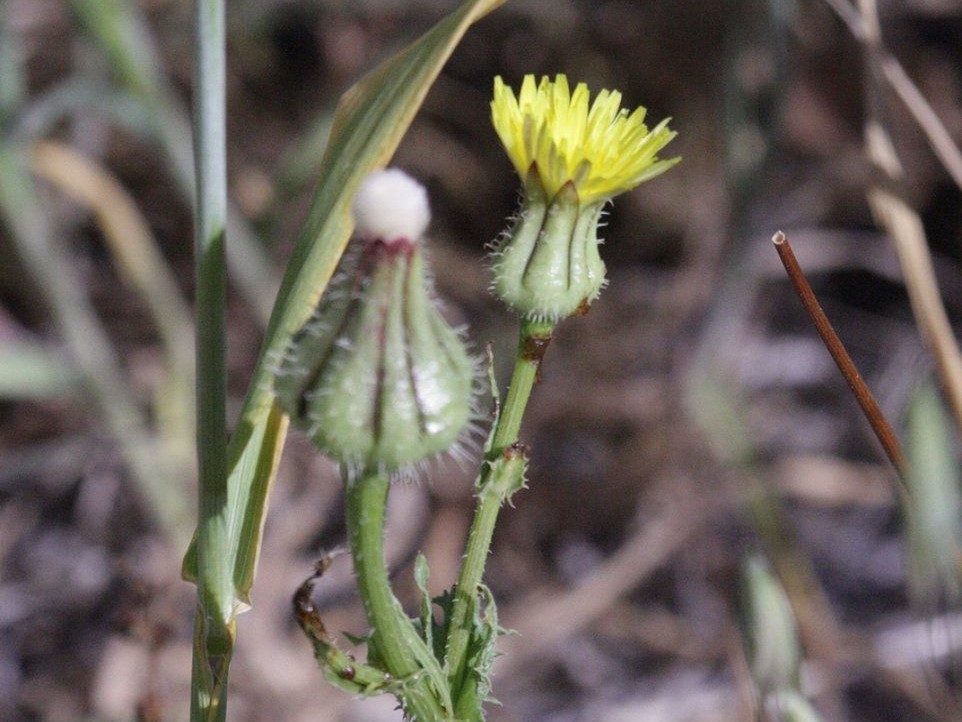Created by: Justin Valliere
Created on: Thursday, Aug 15th, 2024
Created on: Thursday, Aug 15th, 2024
Yes or No:
Yes
Points:
1
Confidence Level:
Very High
Answer / Justification:
The species is native to Eurasia and naturalized in the Azores, South Africa, Australia, Chile, Uruguay, and Mexico. Present in 15 counties in California, reported as expanding in Santa Barbara County and the San Francisco Bay Area.
Reference(s):
Yes or No:
Yes
Points:
2
Confidence Level:
Very High
Answer / Justification:
Present in 15 counties in California, reported expanding in Santa Barbara County and the Bay Area. Areas where naturalized in South Africa and Australia also match California.
Reference(s):
Yes or No:
Yes
Points:
2
Confidence Level:
Medium
Answer / Justification:
As described in the previous review of this species in 2016, Randall 2012 noted it as an environmental or agricultural weed based on references from Victoria and New South Wales. However, the references are advisory lists or checklists and the Victoria invasive plant website still does not list it. This previous review answered 'no' to this question due to a lack of data on impacts of this species.
The species has expanded in California in recent years and in some isolated areas populations achieve high densities (Guilliams et al. 2020). Impacts on native ecosystems in California are not yet known.
The species is described in some online resources as being invasive in Western Australia, where it is regarded as an environmental weed. It has extensively invaded limestone outcrops in conservation areas along coastal Western Australia and is noted by the Urban Bushland Council of WA to have an impact on native bushland plant communities where established. However, there is a lack of peer-reviewed research on the ecological or environmental impacts. It is explicitly noted as a problematic wind-dispersed weed that increased in the Yalgorup National Park in Western Australia following wildfires (Keighery et al. 2023).
In a pre-print article that has yet to undergo peer review, Mesaglio (2022) reports large and dense populations of the species from comprehensive vegetation surveys in two reserves in Sydney, Australia. The author notes that this species considerably more abundant than other "sleeper" weed species that appear to be increasing in abundance, and speculates that it has the potential to "explode" in numbers and become an even more problematic weed.
Reference(s):
Yes or No:
Yes
Points:
3
Confidence Level:
Medium
Answer / Justification:
The species is noted as invading conservation areas in Western Australia (i.e., a Mediterranean climate region) with the potential to impact native bushland plant communities where established. It has been reported as a weed that increases following wildfire in the region.
Reference(s):
Yes or No:
Yes
Points:
1
Confidence Level:
Medium
Answer / Justification:
Urospermum dalechampii (Mediterranean Daisy) is considered to be invasive in Victoria and Tasmania, Australia. Both of these regions have climate overlap with California.
Reference(s):
Yes or No:
Yes
Points:
2
Confidence Level:
Very High
Answer / Justification:
Most of the locations on GBIF are in areas that match California, such as the Mediterranean, South Africa, and parts of Australia (http://www.gbif.org/species/3096624). Based on climate matching tool the species is found in areas with a matching climate.
Reference(s):
Yes or No:
No
Points:
0
Confidence Level:
Low
Answer / Justification:
The species can achieve high densities in California and Western and Eastern regions of Australia. In California, no impacts on native plants have been reported. In Western Australia, it is noted to impact natives when established, but no solid evidence describing impacts on natives is available in the literature.
Reference(s):
Yes or No:
No
Points:
0
Confidence Level:
Medium
Answer / Justification:
The species is reported to increase following wildfire in Western Australia, but no evidence that it promotes fire or alters wildfire regimes.
Reference(s):
Yes or No:
No
Points:
0
Confidence Level:
Medium
Answer / Justification:
The plant is not toxic to humans and is considered a wild edible plant. The species may increase in abundance due to grazing (report from native range), but no available evidence of negative impacts on grazing systems in introduced/invaded areas.
Reference(s):
Yes or No:
No
Points:
0
Confidence Level:
High
Answer / Justification:
The plant is a relatively low-growing (up to 40 cm) forb species, so even when it forms dense monocultures it would not produce impenetrable thickets.
Reference(s):
Yes or No:
No
Points:
0
Confidence Level:
High
Answer / Justification:
The species is an annual/biennial forb that reproduces by seed. Does not have obvious biology for vegetative reproduction.
Reference(s):
Yes or No:
No
Points:
0
Confidence Level:
High
Answer / Justification:
The species is an annual/biennial forb that reproduces by seed. Does not have obvious biology for vegetative reproduction.
Reference(s):
Yes or No:
Yes
Points:
1
Confidence Level:
Very High
Answer / Justification:
Reproduces by seed (achenes).
Reference(s):
Yes or No:
No
Points:
0
Confidence Level:
Medium
Answer / Justification:
No available information on seed production. It appears unlikely that a single plant could produce > 1000 seeds in a single year (the plant is an annual). Review of images on CalPhotos shows that a single flower head would be unlikely to produce >50 achenes, and plants do not appear to typically produce more than five flower heads per individual. Even if all seeds produced were viable, this would still be significantly less than 1000 seeds.
Reference(s):
Yes or No:
Yes
Points:
1
Confidence Level:
Very High
Answer / Justification:
An experiment in Australia showed that this species can germinate within a few days of a significant rain and drying delayed its germination less than it did native species from the same sites. The seeds reached 50% germination within 3 days in an air-drying experiment.
Reference(s):
Yes or No:
Yes
Points:
1
Confidence Level:
Very High
Answer / Justification:
This species is an annual or biennial so must produce seed in its first or second year.
Reference(s):
Yes or No:
Yes
Points:
1
Confidence Level:
Medium
Answer / Justification:
Flowers April to July in California so it can be extrapolated to be capable of more than three months of seed production.
Reference(s):
Yes or No:
No
Points:
0
Confidence Level:
Medium
Answer / Justification:
Seeds are achenes which are typically adapted for wind dispersal. No evidence available for animal dispersal.
Reference(s):
Yes or No:
Yes
Points:
1
Confidence Level:
High
Answer / Justification:
Seeds are achenes which are typically adapted for wind dispersal. Reported as wind dispersed into recently burned sites in Western Australia.
Reference(s):
Yes or No:
No
Points:
0
Confidence Level:
Very Low
Answer / Justification:
No available information on other mechanisms of dispersal.
Reference(s):
Notes:
- < 13 : Low Potential Risk
- 13 - 15 : Moderate Potential Risk
- > 15 : High Potential Risk
PRE Score:
16
Number of questions answered:
20
Screener Confidence (%):
73.0
Organization:
Evaluation visibility:
Public - accessible to all site users

